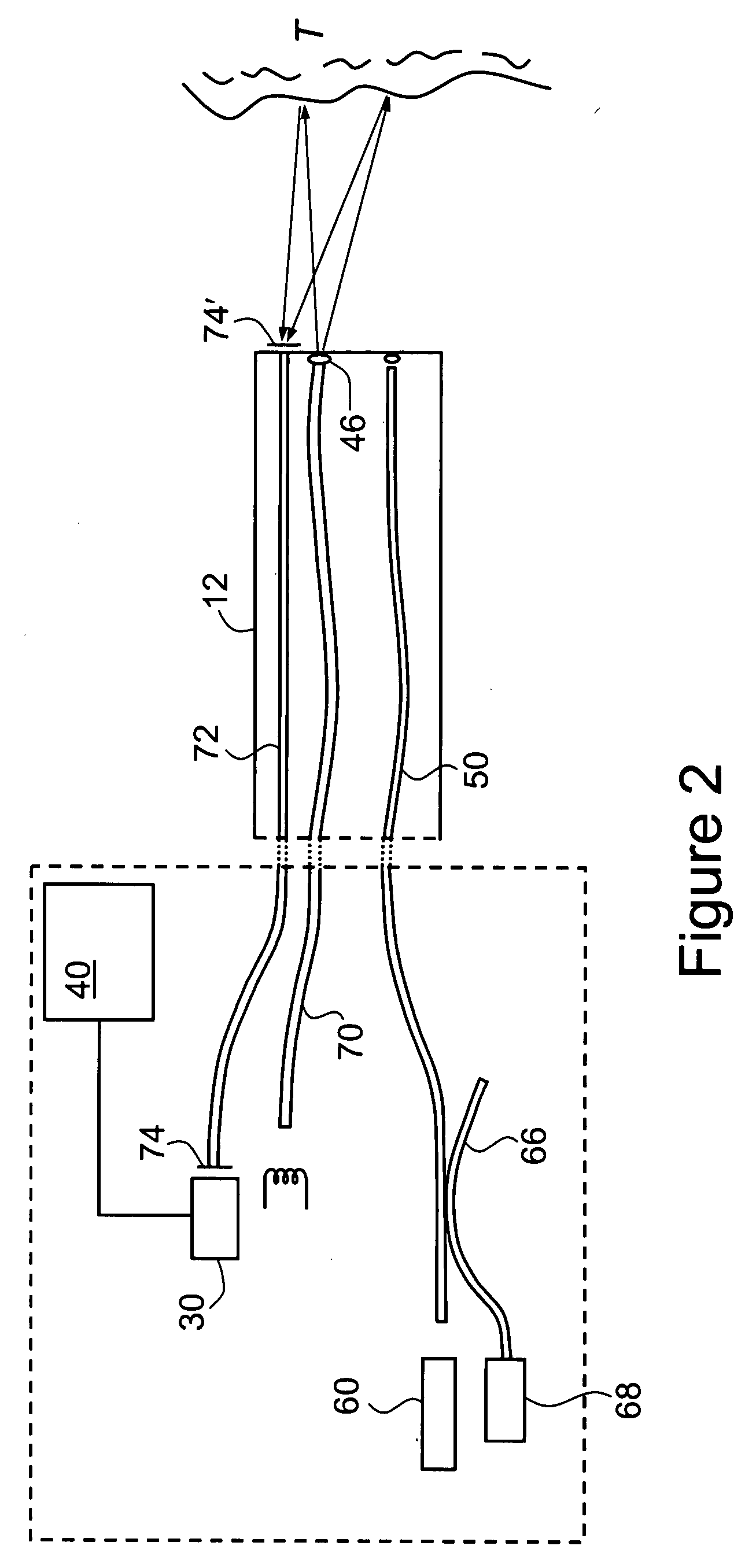Endoscope
a technology of endoscope and endoscope, which is applied in the field of endoscope, can solve the problems of detecting macroscopy changes in the tissue being examined, and achieve the effect of reducing the detection of any background reflected light and maximizing the detection of returning fluorescent ligh
- Summary
- Abstract
- Description
- Claims
- Application Information
AI Technical Summary
Benefits of technology
Problems solved by technology
Method used
Image
Examples
examples
[0071]FIGS. 4A, 4B and 4C are, respectively, examples (reproduced in greyscale) of a normal white light macroscopic image (cf. image 80 of FIG. 3), a corresponding macroscopic fluorescence image (cf. image 82 of FIG. 3) and a confocal microscopic image, collected by means of endoscope 10 of FIG. 1. These images are of a portion of a human colon, and were collected following the administration by intravenous injection of a fluorescent contrast agent in the form of 5 mL of Pharmalab brand sodium fluorescein 10% solution.
[0072]FIGS. 5A and 5B are, respectively, the original color versions of FIGS. 4A and 4B.
[0073] The images of FIGS. 4A and 4B are of the same portion of the colon and represent an area of the order of several centimeters on each side.
[0074] The image of FIG. 4B was obtained by placing a blue filter 22 over light source 20 to produce an incident beam of blue light. As described above, the relative intensity gains for the different color chips in the detector 30 were a...
PUM
 Login to View More
Login to View More Abstract
Description
Claims
Application Information
 Login to View More
Login to View More - R&D
- Intellectual Property
- Life Sciences
- Materials
- Tech Scout
- Unparalleled Data Quality
- Higher Quality Content
- 60% Fewer Hallucinations
Browse by: Latest US Patents, China's latest patents, Technical Efficacy Thesaurus, Application Domain, Technology Topic, Popular Technical Reports.
© 2025 PatSnap. All rights reserved.Legal|Privacy policy|Modern Slavery Act Transparency Statement|Sitemap|About US| Contact US: help@patsnap.com



